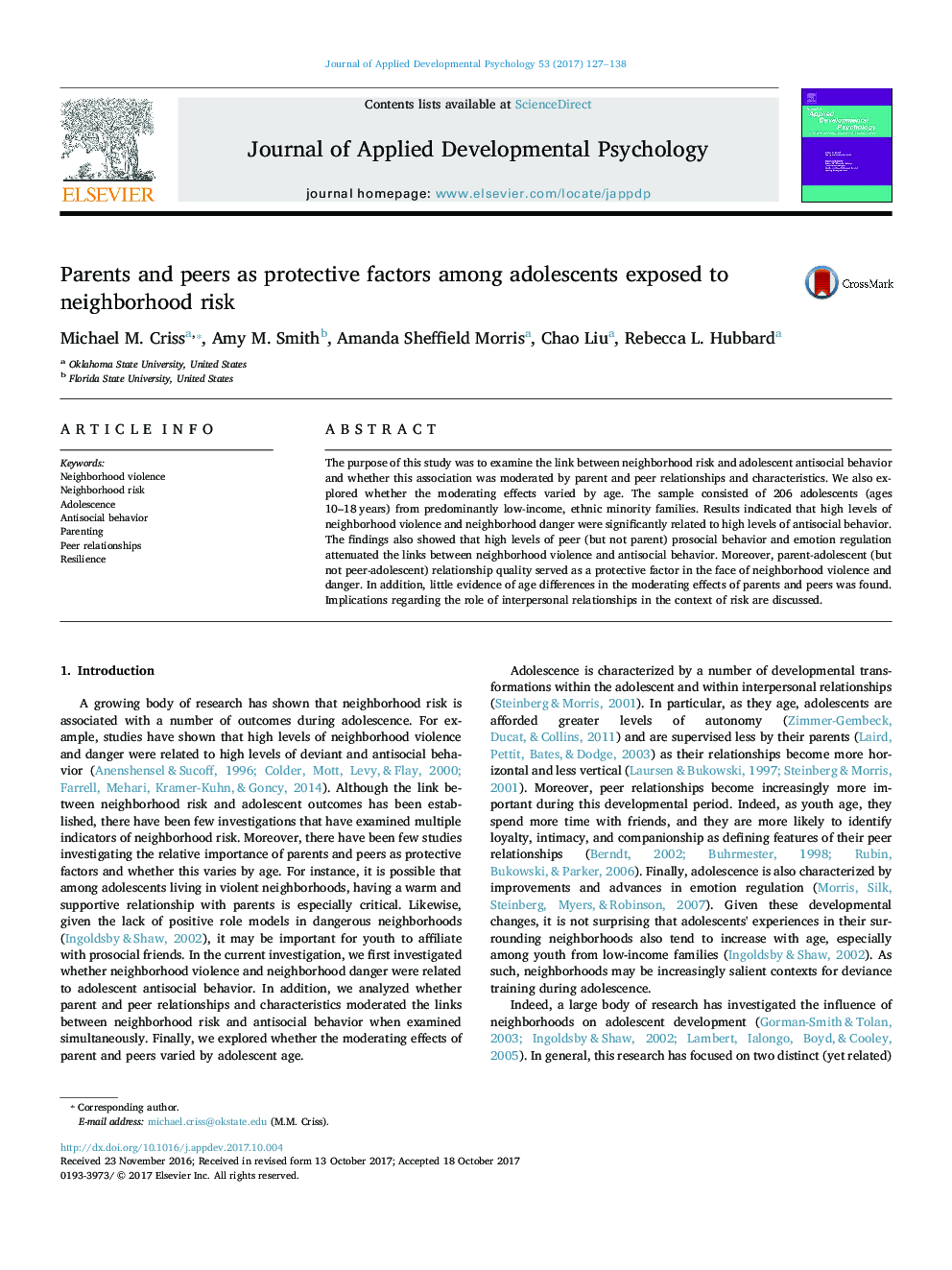| Article ID | Journal | Published Year | Pages | File Type |
|---|---|---|---|---|
| 6842826 | Journal of Applied Developmental Psychology | 2017 | 12 Pages |
Abstract
The purpose of this study was to examine the link between neighborhood risk and adolescent antisocial behavior and whether this association was moderated by parent and peer relationships and characteristics. We also explored whether the moderating effects varied by age. The sample consisted of 206 adolescents (ages 10-18Â years) from predominantly low-income, ethnic minority families. Results indicated that high levels of neighborhood violence and neighborhood danger were significantly related to high levels of antisocial behavior. The findings also showed that high levels of peer (but not parent) prosocial behavior and emotion regulation attenuated the links between neighborhood violence and antisocial behavior. Moreover, parent-adolescent (but not peer-adolescent) relationship quality served as a protective factor in the face of neighborhood violence and danger. In addition, little evidence of age differences in the moderating effects of parents and peers was found. Implications regarding the role of interpersonal relationships in the context of risk are discussed.
Related Topics
Social Sciences and Humanities
Psychology
Applied Psychology
Authors
Michael M. Criss, Amy M. Smith, Amanda Sheffield Morris, Chao Liu, Rebecca L. Hubbard,
